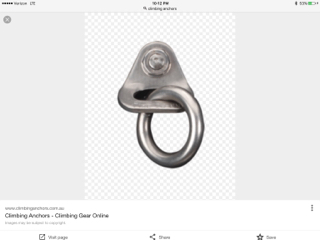WTNUT
5 year old buck +
I have been thinking of posting this for some time, and finally decided to as a welcome to all the new members. I have had three friends/acquaintances die from tree stand accidents. I own a manufacturing business and spent a lot of time trying to perfect and patent a better fall protection system that allowed a hunter to remain tied off from ground to stand and back again. Yes, I know Hunter Safety Systems and maybe others sell a rope with a Prusik Knot that can be hung near your stand and suspended to ground after you hang your stand. Yes, you have to leave it in the tree. Yes, the rope is exposed to weather. Yes, I spoke with nearly every rope manufacturer who would speak to me and every one told me there is no rope that can withstand being exposed to the elements without quickly losing strength and becoming dangerous. So I thought for the longest time, how do I protect the rope? Had lots of ideas, and finally came up with this system. The answer was don't leave the rope out there :).
I take a climbing anchor and attach it above the base of my stand at about chest high once stand is hung. Here is an example of a climbing anchor - there are many types.



Then I run a loop of parachute cord from ground up through the anchor and back down to the ground where I tie the ends of the cord together. The cord can be slid through the anchor by pulling hand over hand like a hoist.
Next, I bought lightweight dynamic climbing rope 9-10 mm. I carry a 60 foot piece of it attached to my backpack. I use a butterfly coil to carry it. When I get to the base of the tree I use my parachute cord to tie a "cow hitch" that attaches one end of my climbing rope to the parachute cord. Then I pull hand over hand to raise the climbing rope up and eventually through the eye of the anchor and then back down to the ground where I attach both ends of the climbing rope to the tree (various ways to do that). I then use a Prusik cord to tie a Prusik Knot to use on the climbing rope. I climb my ladder or steps sliding the Prusik Knot up as I go.
When ready to go down I reverse the process by sliding the Prusik knot down. When I get to the base of the tree. I remove the climbing rope from whatever anchors it at the base of the tree and pull on one end of it until the other goes up, back through the anchor and falls to the ground. I butterfly coil my rope and carry it out with my backpack. The only weather it ever is exposed to is any rain or snow that occurs while hunting.
Give it some thought and if you know of anything that may make our friends safer let us know.
Sent from my iPad using Tapatalk
I take a climbing anchor and attach it above the base of my stand at about chest high once stand is hung. Here is an example of a climbing anchor - there are many types.



Then I run a loop of parachute cord from ground up through the anchor and back down to the ground where I tie the ends of the cord together. The cord can be slid through the anchor by pulling hand over hand like a hoist.
Next, I bought lightweight dynamic climbing rope 9-10 mm. I carry a 60 foot piece of it attached to my backpack. I use a butterfly coil to carry it. When I get to the base of the tree I use my parachute cord to tie a "cow hitch" that attaches one end of my climbing rope to the parachute cord. Then I pull hand over hand to raise the climbing rope up and eventually through the eye of the anchor and then back down to the ground where I attach both ends of the climbing rope to the tree (various ways to do that). I then use a Prusik cord to tie a Prusik Knot to use on the climbing rope. I climb my ladder or steps sliding the Prusik Knot up as I go.
When ready to go down I reverse the process by sliding the Prusik knot down. When I get to the base of the tree. I remove the climbing rope from whatever anchors it at the base of the tree and pull on one end of it until the other goes up, back through the anchor and falls to the ground. I butterfly coil my rope and carry it out with my backpack. The only weather it ever is exposed to is any rain or snow that occurs while hunting.
Give it some thought and if you know of anything that may make our friends safer let us know.
Sent from my iPad using Tapatalk




